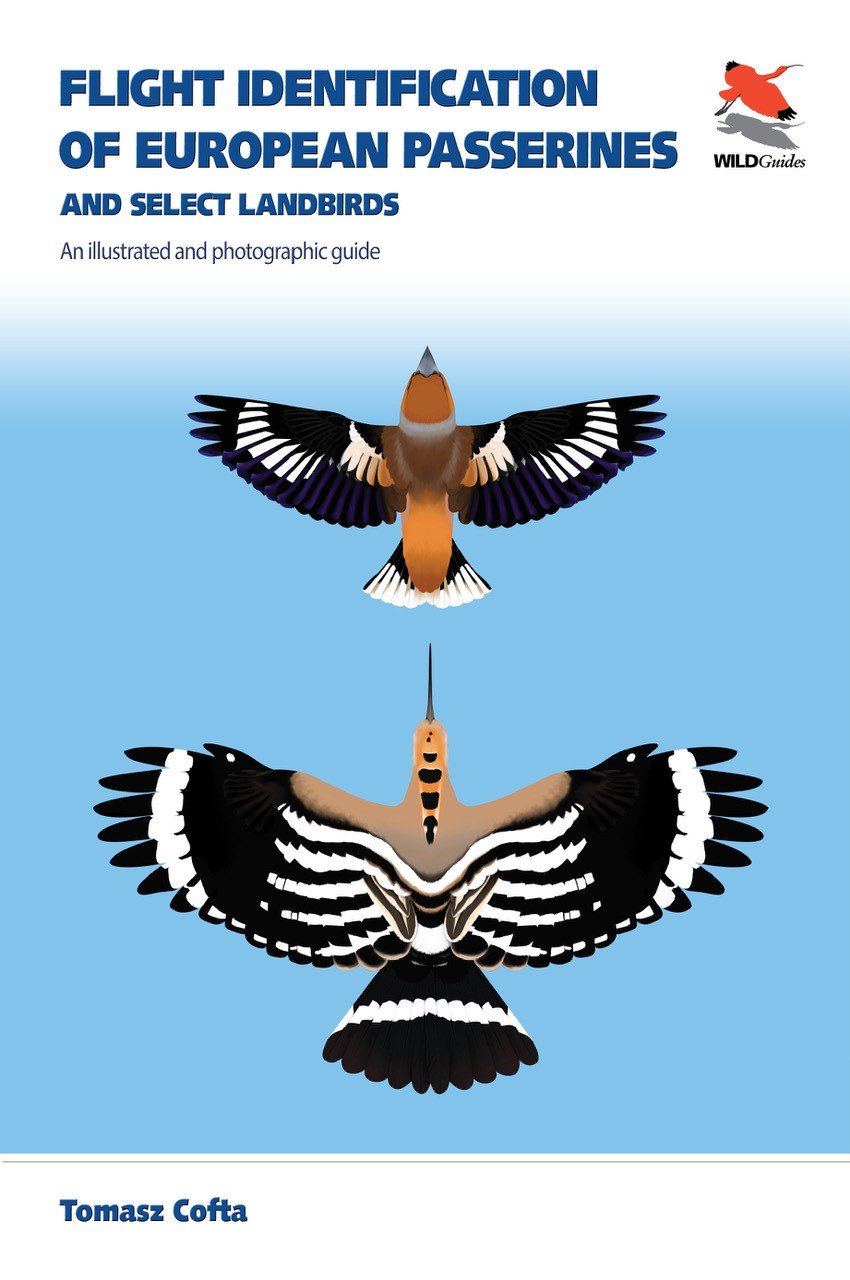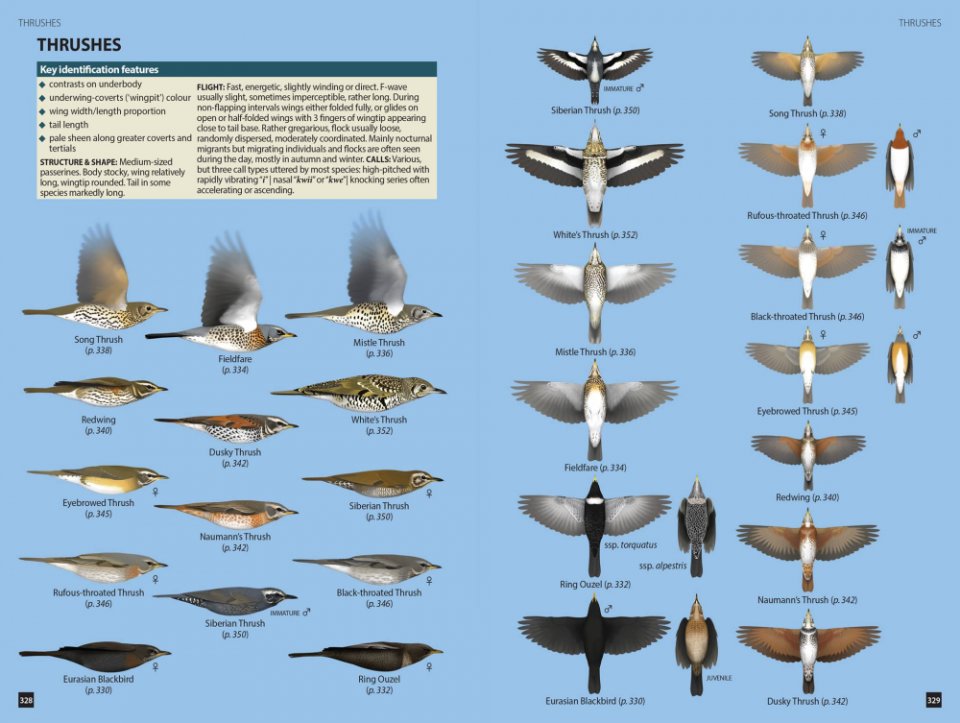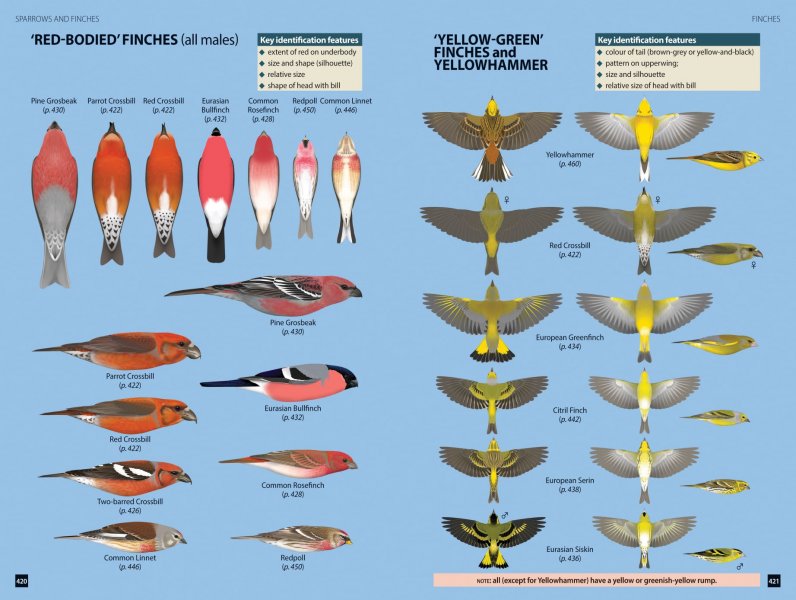Flight Identification of European Passerines and Select Landbirds
- Flight Identification of European Passerines and Select Landbirds by Tomasz Cofta (Princeton University Press, 2021).
- 496 pages, 2,400 colour photographs, 850 illustrations.
- ISBN 9780691177571. Paperback, £38.
- Bookshop from £32.99
There is a plethora of top-quality bird identification guides on the market these days – both illustrated and photographic – which cover a huge range of geographical areas. It hasn't always been this way – it's fair to say that advances in both birders' knowledge and technology (optics and photography particularly) have undoubtedly contributed to the quality of such publications increasing substantially over the past two or three decades.
It is hard to imagine a guide of the quality of Flight Identification of European Passerines and Select Landbirds coming out 20 years ago. When I first received a copy, I was excited by its novel aims but remained somewhat sceptical about whether it could pull them off. The more I pore over this guide, though, the more I am impressed. Hats off to the author and illustrator, Tomasz Cofta, who has produced a quite remarkable – and undoubtedly original – piece of work.
Although the concept may at first seem a little alien – a guide on raptor identification in flight, sure, but passerines? – the more you think of real-life birding situations, the more relevant it becomes. Quite often (sometimes more often than not!), the first views we get of a passerine are in flight, bounding from bush to bush. Others may be migrating, flying over at height and not pausing as they go. These are just two situations in which our encounters with a potentially interesting small bird are brief, tantalising and, sometimes, ultimately frustrating in their conclusion, and are a far cry from the classic ID guide illustration of a species at rest and in profile (which is how we all want to see a bird, right?).
An introductory section addresses key aspects, such as shape and size of birds in flight, colouration, flocking behaviour and, crucially, flight style. This is the first hint at what a fine observer of birds Cofta is; his attention to detail throughout demonstrates how well he has studied every family and its species. You don't learn this kind of detail overnight, it takes years of watching and studying birds.
Set out in taxonomic order, species accounts (237 of them, to be precise) combine introductory text with a mix of high-quality photographs and illustrations, the last the sole work of the author. Each family of passerines begins with a double-page spread showing members of that family side by side, in profile (colour and plumage detail shown) and from below (silhouette). Overall key identification features for the family, including shape and structure, as well as flight style, are detailed.
The text is relatively brief in the individual species accounts, but includes key pointers on how to recognise each species in flight (size, coloration, flight style and any flocking behaviour are all covered). Cofta's digital images aren't necessarily to everyone's taste, but I found them stunning, effectively encompassing the shape, plumage and jizz of each species and, in many cases, appearing remarkably life-like, with colour reproduction highly accurate. We're never going to see quick-moving passerines so well in the field, but that doesn't lessen their impact in any way. Personal favourites included larks, pipits, and pigeons and doves, but they are all truly excellent.
What is just as impressive is the presence of so many high-quality photos of passerines in flight. The photographers among us will know all too well how challenging it can be to take an effective flight shot of a thrush, warbler, tit or otherwise – clearly a vast amount of focus and research was invested in accumulating all those images. I also found the inclusion of sonograms for similar-sounding species, which may call while in flight, a thoughtful touch and a helpful tool for the contemporary birder.
Weighing in at almost 500 pages and packed with 850 illustrations and more than 2,400 photographs, this is a visual guide like no other. In many ways it is a reflection of how birding has advanced since the turn of the millennium. Improvements in optics and digital photography have been spectacular, and clearly contribute to making the production of such a guide possible. Furthermore, flight identification has never been more relevant, with 'vis-migging' and associated recording an increasingly popular pastime among birders across the region. Flight Identification of European Passerines and Select Landbirds is a genuinely stunning production that is arguably the greatest 'must-have' for European birders since the Collins Bird Guide.





